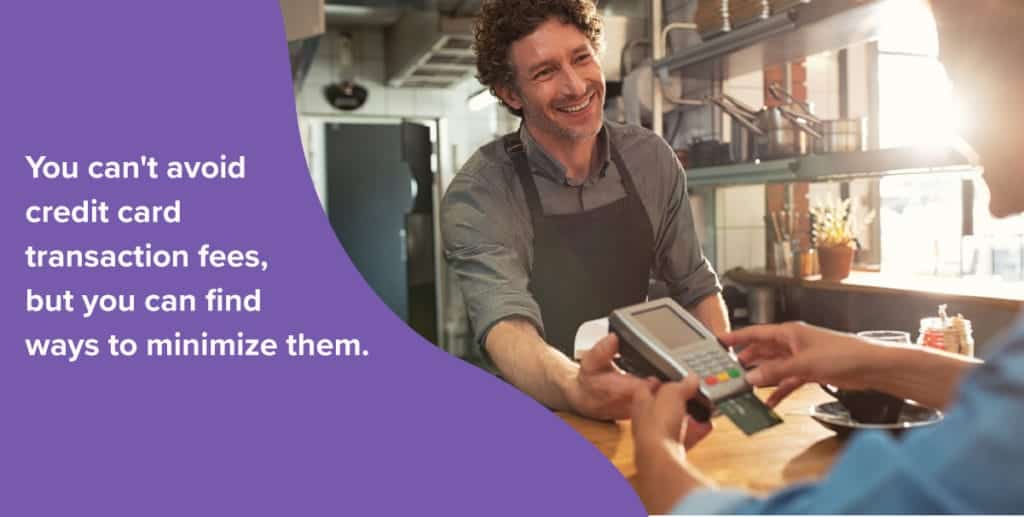Covid-19 Special NRS Pay Point of Sale Pricing: $699 (REG. $1299)
Covid-19 Special NRS Pay Point of Sale Pricing: $699 (REG. $1299)

For merchants, credit card processing can be a significant expense, and finding ways to save on these fees can be a critical factor in maximizing profits. With the right strategies and tools, merchants can reduce their credit card processing costs and increase their bottom line. However, many merchants are struggling to lower credit card fees and are being hit with unexpected expenses, hurting their bottom line. To solve this problem, we are going to guide you through what fees to look out for, how to reduce them, and how NRS Pay can help your business:
Credit card processing can be extremely beneficial to businesses in a variety of ways. Businesses can benefit from increased cash flow, increased sales, reduced fraud risk, and increased customer satisfaction. However, there are some fees associated with credit card processing that are deducted from the transaction. These charges include:
In addition to these fees, you can pay additional fees for chargebacks
s, which occur when a customer disputes a charge from your business. You can typically avoid these fees by avoiding errors and fraud.

Now that you know what credit card transaction fees you’re required to pay, let’s talk about how you can reduce those fees. You can’t avoid credit card transaction fees, but you can find ways to minimize them. We’re especially focusing on interchange fees and discount rates, which can be the fees that end up costing you the most. Let’s look at five ways you can keep fees low to maximize your profits from credit card sales:
Merchants who do not have a credit card reader accessible can accept payment by manually entering the card’s information. This is referred to as a “card-not-present” transaction. This method is used by customers when they shop online, and they need to enter their credit card information for the transaction to be completed. The disadvantage of manually entering credit cards is that the interchange fees are higher than when swiping, inserting, or tapping cards. For example, the interchange rates for Visa and Mastercard are higher when the cards are keyed in rather than swiped. Fees for manually entering cards tend to be higher because this method is generally less secure.
We just looked at the importance of using a card reader to process credit card transactions, but not all readers are created equal. Older credit card readers weren’t designed to accept EMV chip cards. Now, with an EMV card reader, it is far more secure than swiping a magnetic stripe card because the chip generates a unique code for each transaction, making it harder for hackers to steal card information.
If your card reader isn’t EMV-enabled, you will likely pay higher interchange fees. Whenever a customer swipes a chip card instead of using an EMV reader, you may have to pay more fees. Your business can be more susceptible to fraud if you do not own an EMV reader. As of October 2015, the liability for this fraud scenario was shifted to merchants who haven’t adopted the more secure EMV process. Therefore, it is recommended that you upgrade your card reader to an EMV-enabled one to avoid paying higher interchange fees.
To settle transactions promptly and get the best interchange rate, merchants should choose the right payment processor, use the latest technology, ensure accurate transaction data, settle transactions daily, and monitor interchange rates. Generally, it is best to have a payment processor that is dependable and secure for transactions, as well as one that integrates EMV chip cards and contactless payment. It should be noted that merchants should double-check the transaction amount, date, and merchant category code to ensure that the correct interchange rates are used. By monitoring this information, they can make any necessary changes to their payment processing methods to ensure they are getting the best rates possible. This may involve adjusting payment methods or negotiating with payment processors.
While you can find ways to qualify for lower interchange fees, these fees are still set. In other words, you can’t negotiate for lower fees. However, discount rates from credit card processors are more negotiable. Some credit card processors, including NRS Pay, offer a custom rate. It isn’t all about negotiating with one company, though. The most important thing is to directly compare quotes from various processors so you can make the best decision for your business. Make sure you understand what’s included in the quote you receive. It should include the interchange and assessment fees and the processor’s discount rate. Some credit card processors will complicate things to obscure hidden fees and padded pricing, so look for simplistic, transparent pricing models. This way, you won’t be blindsided by exorbitant fees.

There are many benefits to having one provider for both your POS system and payment processing. By partnering with one company, you can enjoy a more integrated, streamlined process. You can also enjoy some possible financial savings. In some cases, you can qualify for lower processing fees. As Fit Small Business notes, working with the same provider for your POS and payment processing can simplify your payments and eliminate fees you may otherwise be expected to pay, such as a fraud prevention fee or an integration fee.
For example, National Retail Solutions (NRS) provides a free EMV card reader to all merchants who commit to using our credit card processing for three years. This EMV reader can help you process payments more securely and avoid penalties for being non-compliant with EMV technology. Our card reader is also capable of taking Apple and Android payments. While credit cards remain popular, these mobile wallet apps are quickly gaining traction with consumers.
When you partner with NRS Pay, you get fair credit card processing rates that your small business can afford. We offer a transparent fee model and do not pad fees. Instead, we offer two simple pricing models for small business payment processing fees. Our flat rate is $0.10 plus 2.49% of the sale.
If your business processes more than $10,000 in monthly credit card transactions, you can also qualify for a custom rate. NRS Pay also offers its FREE cost-cutting Cash Discount program, enabling retailers to offer a discount using the NRS POS, for customers who pay with cash. (For any business that processes less than $18K/month, NRS Pay Cash Discount costs just $49.95 flat.) NRS is committed to helping small businesses succeed. We can even help you implement a cash discount program to offset credit card processing fees. Request a free quote today to get started.
